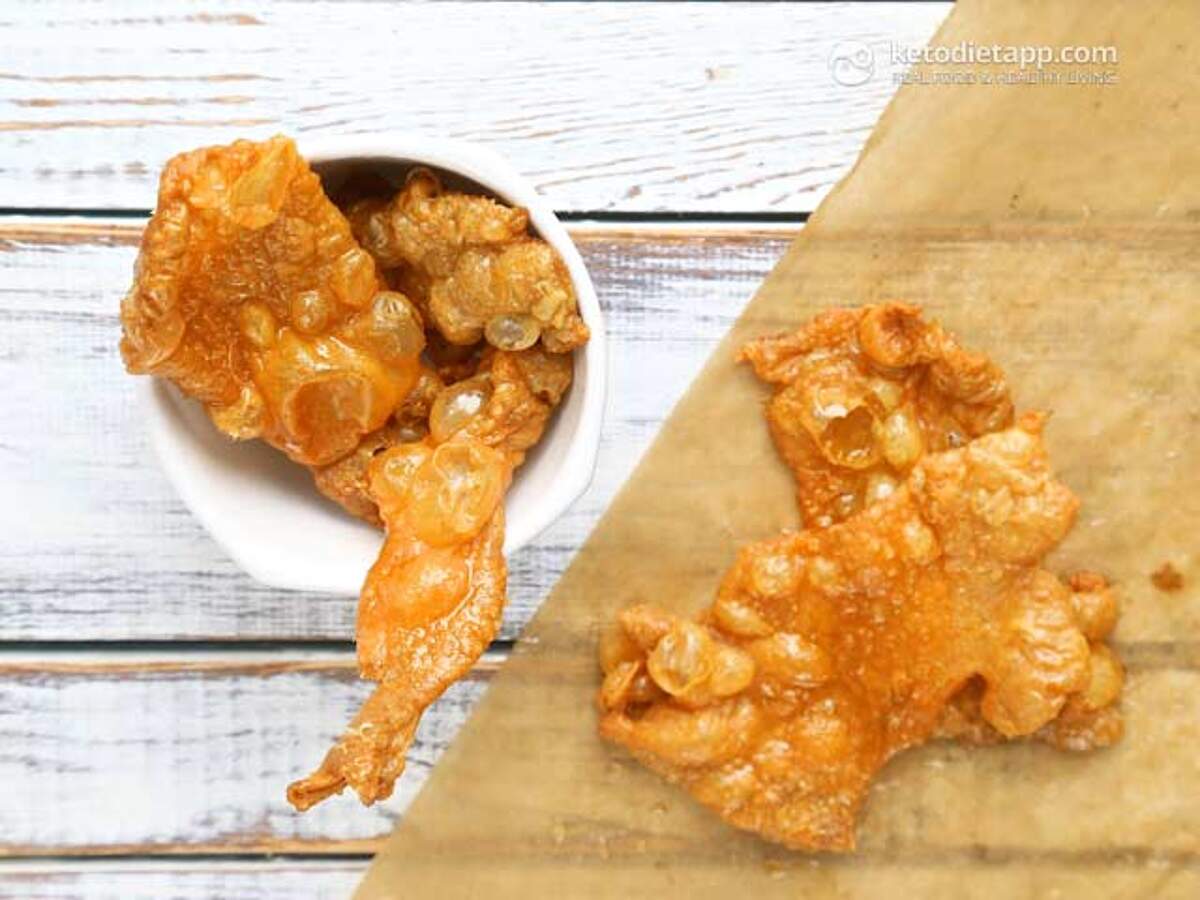Have you ever bitten into something so satisfyingly crunchy that it made your taste buds dance? Well, that’s exactly what happens when you try chicken cracklings! As someone who’s experimented with countless kitchen creations, I’m excited to share everything you need to know about this delicious treat that’s been gaining popularity among food enthusiasts.
What Exactly Are Chicken Cracklings?
Chicken cracklings are crispy, savory snacks made from rendered chicken skin. They’re essentially the chicken version of pork rinds, but with their own unique flavor profile and texture. When you slowly cook chicken skin at a low temperature, the fat renders out, leaving behind shatteringly crisp pieces that are lighter and airier than the original skin.
These crunchy bites are also known as chicken chips or chicken skin chips in some circles and they’re becoming increasingly popular for several good reasons
The Allure and Benefits of Chicken Cracklings
In recent years, chicken cracklings have gained significant popularity, especially among those following keto, paleo, and low-carb diets. Why? Because they’re a high-fat, moderate protein snack with virtually no carbohydrates.
The fat in chicken skin is predominantly monounsaturated and saturated fat. While saturated fat was once considered unhealthy, current research shows it’s not as bad as once thought when consumed in moderation as part of a balanced diet.
Compared to pork rinds, many consider chicken cracklings a healthier alternative because:
- The rendering process removes a significant amount of fat
- They’re more protein-dense (about 7-10 grams of protein per ounce)
- They contain no carbs
- They can be made with minimal added ingredients
Plus, they’re a tasty way to reduce food waste by using the whole bird rather than discarding the skin. That’s what I call a win-win!
How to Make Crispy Chicken Cracklings
Making these crispy treats relies on slowly rendering the fat from the skin using controlled, low heat. There are several methods you can use:
Oven Method
This is great for making larger batches:
- Preheat your oven to 300-350°F
- Pat chicken skins dry with paper towels
- Sprinkle with salt on both sides
- Arrange skins in a single layer on a rack placed on a rimmed baking sheet
- Bake for about 30-60 minutes until browned and crispy
- Flip halfway through for even cooking
Air Fryer Method
Quicker and produces a more delicate crunch:
- Pat chicken skins dry and season with salt
- Lay skins in a single layer, skin-side down, in the air fryer basket
- Cook at 370-400°F for 6 minutes
- Flip skins over so they’re skin-side up
- Air fry for another 6 minutes or until crispy
Stovetop Method
Offers more control but requires attention:
- Place chicken skin in a cold skillet
- Set over medium-low heat
- Cook for 15-30 minutes, draining fat as it renders
- Flip occasionally until crispy
Deep Frying
Quick but adds extra fat:
- Heat oil to 350°F
- Fry chicken skin for 2-5 minutes until golden and crispy
No matter which method you choose, it’s essential to thoroughly pat the chicken skin dry before cooking. This helps achieve maximum crispness.
Where Do You Get Chicken Skin?
You might be wondering where to find chicken skin. Most butchers and grocery stores don’t sell chicken skin by itself, so your best options are:
- Save skins from chicken thighs or breasts you’re already using in other recipes
- Ask your local butcher if they sell chicken skins separately
- Buy bone-in, skin-on chicken parts and remove the skin yourself
Thigh and leg skin tends to be fattier and yields more cracklings than the thinner breast skin, but any chicken skin works well.
Seasoning Your Chicken Cracklings
While basic salt-seasoned chicken cracklings are delicious on their own, you can get creative with seasonings. However, I’ve found it’s best to only season with salt before cooking, as herbs and spices can burn during the rendering process.
After cooking, you can sprinkle your favorite seasonings onto the hot cracklings. Popular options include:
- Garlic powder
- Onion powder
- Paprika
- Cayenne pepper
- Black pepper
- Chili powder
- Rosemary
- Oregano
- Nutritional yeast
- Ranch seasoning
Serving and Storing Chicken Cracklings
These crispy treats are versatile and can be enjoyed in various ways:
As a Standalone Snack
They’re delicious on their own or dipped in guacamole, salsa, hot sauce, or your favorite dressing.
As a Crunchy Topping
- Crumble over salads as a low-carb crouton substitute
- Sprinkle on soups and chilis for added texture
- Add to grain bowls for extra protein and crunch
- Top pizzas, tacos, eggs, or avocado toast
Freshly made chicken cracklings are best consumed immediately, as they’re at peak crispness. If you have leftovers, store them in an airtight container at room temperature for 2-3 days, though they will lose some crispiness over time.
For longer storage, you can:
- Freeze cracklings in a single layer on a sheet pan
- Transfer to a freezer bag once frozen
- Re-crisp in a 400°F oven for about 5 minutes when ready to eat
FAQs About Chicken Cracklings
Are chicken cracklings healthy?
While they’re high in fat, sodium, and calories, they’re also high in protein and contain no carbs. Enjoyed in moderation as part of a balanced diet, they can be included in a healthy lifestyle.
How do I make my chicken cracklings extra crispy?
Start with very dry skin (let it air-dry in the fridge overnight or pat thoroughly with paper towels). Rendering low and slow, then cooling completely maximizes crispness.
Are chicken cracklings keto/paleo/Whole30 friendly?
Yes! They fit into keto, paleo, and Whole30 diets since they contain no carbs, grains, dairy, or legumes.
Can I use the rendered fat from making cracklings?
Absolutely! The byproduct of making cracklings is rendered chicken fat, also known as schmaltz. This flavorful fat can be strained and used for cooking vegetables, making gravies, or adding depth to other dishes.
What’s the difference between chicken cracklings and chicken skin chips?
The terms are often used interchangeably. Generally, “chicken cracklings” refers to skin that has been rendered to a crisp, brittle state with most fat removed, while “chicken skin chips” might retain more of the original fat content.
The Satisfying Crunch of Chicken Cracklings
In our pursuit of delicious snacks that satisfy our cravings without derailing our dietary goals, chicken cracklings stand out as a worthy contender. They offer that satisfying crunch we all love, while being more protein-dense than many alternative snack options.
I’ve personally found that making a batch of chicken cracklings is not only a great way to use up chicken skin that would otherwise be discarded, but it’s also become a favorite weekend activity. There’s something deeply satisfying about transforming a humble ingredient into something so delightfully crispy and flavorful.
So next time you’re preparing chicken and about to toss those skins, consider saving them for a batch of homemade cracklings. Your taste buds (and possibly your waistline) will thank you for discovering this crispy culinary gold!
Have you tried making chicken cracklings before? What’s your favorite seasoning combination? I’d love to hear about your experiences in the comments below!

What can you do with cracklings?
Other than eating these delicious morsels out of hand, they are often incorporated into biscuit or bread dough (cracklin bread) before baking.
Some folks slip them into scrambled eggs and onions, use them to flavor cabbage dishes, gravies, sauces, and other foods.
A Sign of a Frugal Cook
As is common in nose-to-tail eating of frugal cooks, nothing is wasted, and cracklings are a prime example. If the skin were edible, that, too, would have gone into the cooking pot. Instead, that went into the boiling pot and was tanned into hide.
